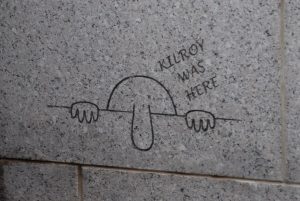POLL: What do you use to find information?
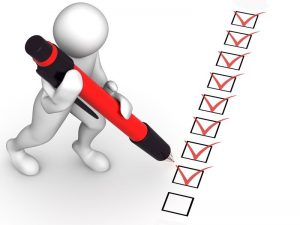 I am getting ready to open the next chapter of my life, and I was thinking about how I can leverage my knowledge and experience to enhance the collecting community. As an experienced collector of all types and a dealer in areas other than numismatics, I learned a lot about collectors and their habits that could benefit a general audience.
I am getting ready to open the next chapter of my life, and I was thinking about how I can leverage my knowledge and experience to enhance the collecting community. As an experienced collector of all types and a dealer in areas other than numismatics, I learned a lot about collectors and their habits that could benefit a general audience.
As I was thinking about sharing my experiences, I wondered where most people learned about their collectibles. But the resources I had are different than those available today. Even the way we take in and understand knowledge is different. I thought it would be interesting to ask the numismatic community how they learn about collecting.
So let’s ask the question:
Weekly World Numismatic News for June 20, 2021
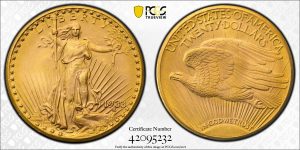
Farouk-Fenton 1933 Saint-Gaudens $20 Double Eagle was sold by Sotheby’s for $18,872,250 in a June 2021 auction. (Picture Credit: PCGS)
The gold market is very active, and the prices are rising, but not because of the sale of the Double Eagle. The demand for physical metals caused by economic uncertainty has driven up the prices for gold and silver coins.
While discussing the demands for precious metals with dealers, they say that the demand is for coins. Their customers are buying American Eagle coins causing the supply of coins to decrease. When customers cannot buy American Eagles, they look to purchase silver coins from other state mints. Canada’s Maple Leaf and Mexico’s Libertad are popular alternatives to the American Eagle.
Investors are looking to purchase physical assets that have some backing. They are not buying bullion or contracts. As a result, the price of bars and other bullion products is reasonable compared to higher-priced coins. Contracts are paper-based trading of bullion. Many smaller investors traditionally do not like to trade based on paper. They are looking for something physical, like coins.
Bullion investing increases when investors perceive there are uncertainties in the markets. The current market run started last year during the beginning of the pandemic and has not stopped.
The markets are not responding to the sale of the 1933 Double Eagle. It is the only 1933 Double Eagle coin that is legal to own and has a story that inspired two books. Using this coin as an example of a reason to invest in gold coins is not representative of the reality of the bullion coin market. Beware of those who will try to sell you bullion based on the sale of this coin.
And now the news…
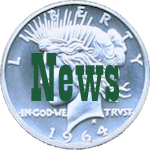 → Read more at providencejournal.com
→ Read more at providencejournal.com
 → Read more at kitco.com
→ Read more at kitco.com
 → Read more at thevintagenews.com
→ Read more at thevintagenews.com
 → Read more at pattayamail.com
→ Read more at pattayamail.com
 → Read more at miningweekly.com
→ Read more at miningweekly.com
Weekly World Numismatic News for June 13, 2021
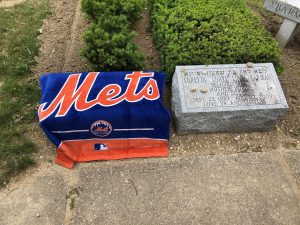
Before unveiling my father’s grave marker, it was covered with an appropriate towel. After 12 years, he is next to my mother, again.
Last Friday was my father’s unveiling. For those not familiar with the custom, Jewish descendants celebrate the life of the deceased by dedicating the grave marker where the loved one is buried. The marker is covered then revealed at the end of the service.
As a die-hard and always suffering Mets fan, my father’s marker was covered with a Mets towel until the end of the service. Later that night, the family went to Citi Field to attend a Mets game in his honor. Jacob deGrom pitched a phenomenal six innings and the Mets won.
It was my first time attending a game at Citi Field. The stadium is quite different from Shea Stadium where my father and I saw many games together. In 1972, we attended more games than he expected because I kept winning tickets. That year I was delivering Newsday when it was an afternoon newspaper. To boost the number of subscribers, Newsday would give out prizes to the paperboys who sold the most subscriptions. When Newsday started a Sunday paper, there would be more opportunities to win prizes. I chose the Mets tickets whenever it was an option.
In those days, the paperboys collected directly from the subscriber. On Saturday, we would pay the distributor for the week’s newspapers and hand in orders for the next week. One week I almost did not have enough money to pay the bill because several people paid using silver coins. The silver coins went inserted into the blue folders. My father helped me make up the difference.
By the end of my three years delivering Newsday, I had a nearly complete set of Roosevelt dimes picked from pocket change and from the people who paid for newspapers. Shortly before we moved from New York, my father and I went to a local coin shop and we purchased 12 dimes to almost complete the set. A few days later, he came home from work with the one dime that the local coin shop did not have and a Whitman Deluxe album. Later, I learned he bought the coin and the album from Stack’s in Manhattan.
Although this chapter is over, the memories and the album of Roosevelt dimes remain.
And now the news…
 → Read more at news.fsu.edu
→ Read more at news.fsu.edu
 → Read more at smithsonianmag.com
→ Read more at smithsonianmag.com
 → Read more at smh.com.au
→ Read more at smh.com.au
Weekly World Numismatic News for June 7, 2021
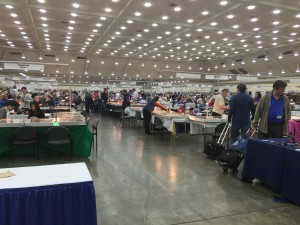 Life in the United States is coming back. Although COVID-19 continues to be a concern, the vaccines seem to be mitigating many of the issues that closed down the country last year. According to many reports, the United States is doing better than other countries with vaccinations. The result is a decrease in the number of infections and deaths.
Life in the United States is coming back. Although COVID-19 continues to be a concern, the vaccines seem to be mitigating many of the issues that closed down the country last year. According to many reports, the United States is doing better than other countries with vaccinations. The result is a decrease in the number of infections and deaths.
COVID-19 will change how we live life, at least for the next few years. Aside from the loss of family members, I am no longer shaking hands. I will fist-bump with someone. Maybe we should learn from the Japanese and bow in respect.
Another change is the reduction in handling items. When I go to a store, I continue to wear nitrile gloves. Even though science has proven that COVID-19 cannot live on surfaces for long times, studies have shown that a dollar bill can have more bacteria than a toilet seat.
The next question is what will happen at coin shows. When we go to shows, people will examine coins, currency, and exonumia before they purchase. Collectors will be digging through junk boxes, those long storage boxes, and flipping pages in notebooks. Collectors will handle slabs and flip through pages of the available books. While this is no different from shows in the past, the COVID-19 pandemic scared everyone. A result of the heightened awareness of viruses was a significant reduction in flu cases.
People traveling to long-distance shows will be required to wear masks in the airport and on airplanes. Show venues will continue to require people to wear masks and social distancing that will reduce dealer participation.
COVID-19 restrictions require the ANA to reduce the number of dealers to maintain social distancing. What we do not know are the other restrictions that the ANA will have to follow. Will there be restrictions on the number of people on the bourse floor? What about attendance restrictions on the peripheral sessions like Money Talks and the auctions? How will the exhibits be handled? What other restrictions will the ANA be required to follow?
It is good that life is resuming, but there are more questions than answers. Get vaccinated and stay safe.
And now the news…
 → Read more at marketresearchtelecast.com
→ Read more at marketresearchtelecast.com
 → Read more at cnn.com
→ Read more at cnn.com
 → Read more at globenewswire.com
→ Read more at globenewswire.com
What Does $18 Million Buy These Days?
On June 8, 2021, Sotheby’s auctioned the Stuart Weitzman Collection. The auction consisted of three of the rarest items in the world, including the Farouk-Fenton 1933 Saint Gaudens Double Eagle. It is the only 1933 Double Eagle coin that anyone who can afford it can legally own.
The coin sold for $18,872,250!
Although not confirmed by Sotheby’s, the price realized suggests that it includes the buyer’s premium. Sotheby’s has not disclosed the buyer’s name.
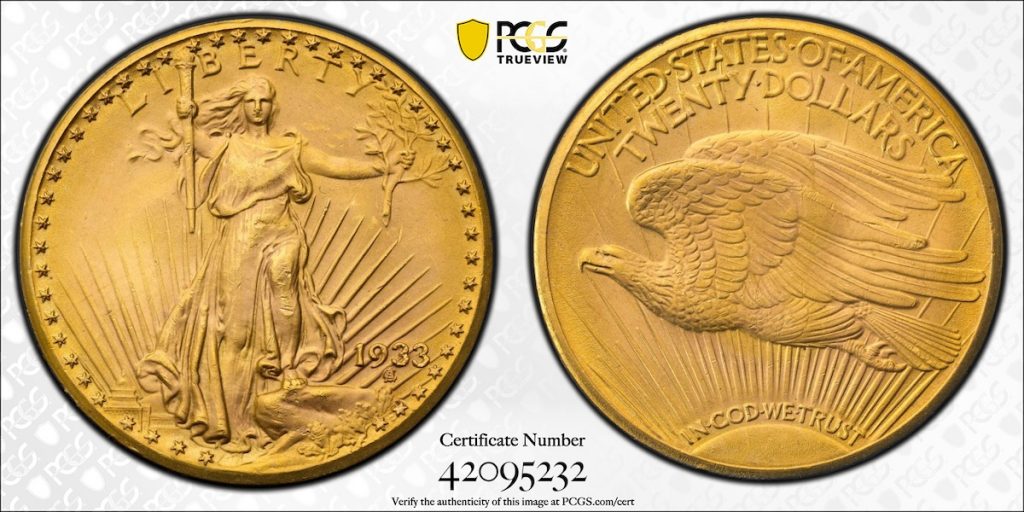
Farouk-Fenton 1933 Saint-Gaudens $20 Double Eagle was sold by Sotheby’s for $18,872,250 in a June 2021 auction.
(Picture Credit: PCGS)
Arguably, the most famous coin in the world, the price was over the auction estimate of $10-15 million but under what the numismatic industry expected. The price is significantly more than the $7,590,020 paid in 2002 for the coin, including $20 to monetize the coin officially. The auction included the U.S. Mint’s monetization certificate.
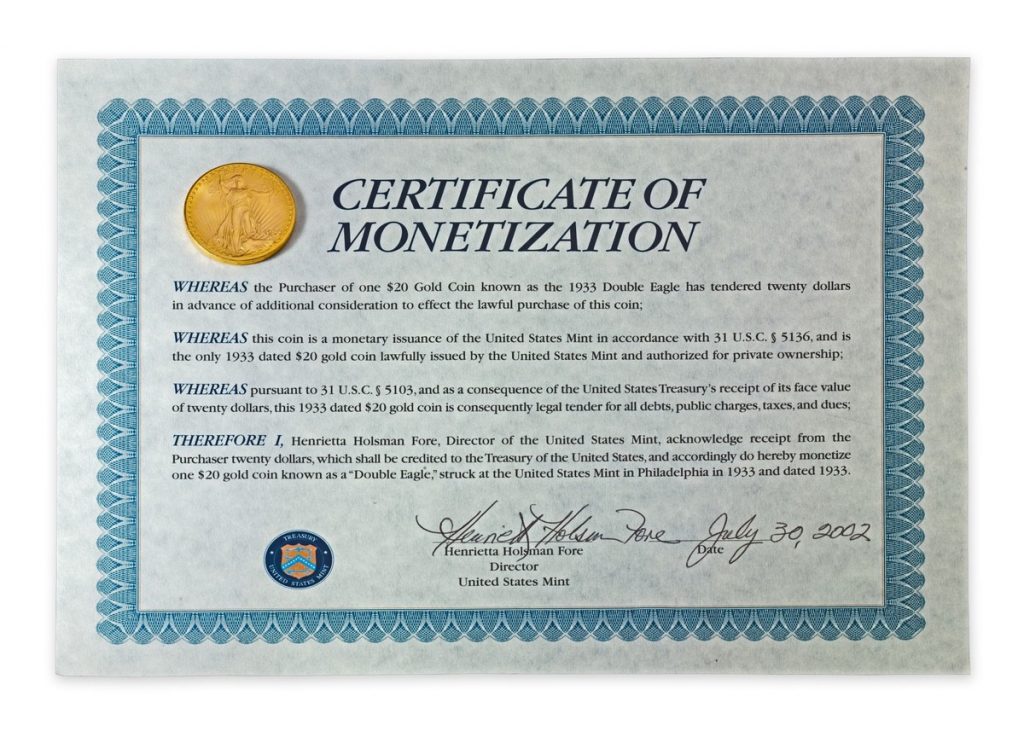
U.S. Mint’s Certificate of Monetization for the Farouk-Fenton Double Eagle (Picture Credit: Sotheby’s)
Also included in the auction was The Inverted Jenny Plate Block sold for $4,860,000 (estimated at $5-7 million), and The British Guiana One-Cent Black on Magenta stamp that sold for $8,307,000 (estimated at $10-15 million).
Numismatists may want to save the catalog link for the sale of this coin. Sotheby’s catalog listing includes the coin’s history with an updated history of the other 1933 Double Eagle coins. The update includes the ten coins “discovered” by Joan Langbord, daughter of Israel Switt, and her family’s fight to retain ownership. Documentation from court filings adds to the story.
David Tripp wrote the original catalog description for the first Sotheby’s/Stack’s auction. In 2004, Tripp published his research in Illegal Tender. Given the new information, would it be worth updating the book?
May 2021 Numismatic Legislation Review
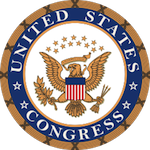 Congress became quiet on the numismatic front in May. After a flurry of vanity bills introduced in March and April, the only bill to be introduced in May was to create a commemorative to raise money for the National World War II Memorial in Washington, D.C.
Congress became quiet on the numismatic front in May. After a flurry of vanity bills introduced in March and April, the only bill to be introduced in May was to create a commemorative to raise money for the National World War II Memorial in Washington, D.C.
The National World War II Memorial opened in 2004 to a lot of acclaim for its design. Surrounding a reflecting pool are 56 granite pillars arranged in a semicircle. Each pillar has the name of the 48 states and eight territories at the time of the war. Two sides represent the two theaters of the war, the Atlantic and Pacific.
On either side of the pool are victory arches to celebrate the victories in Europe and the Pacific. Hidden within the design are two “Kilroy was here” engravings. The phrase’s origin remains a mystery, but it was prevalent where ever U.S. troops were located.The memorial is open 24 hours a day, and the National Parks Service does not charge admission fees to enter. The only money the NPS receives to maintain the memorial is from the budget process and donations. Neither is enough to prevent the deterioration caused by Washington weather extremes and the wear of visitors. Unfortunately, there has also been vandalism.
Because of the condition problems, groups are looking for ways to raise money to refurbish and improve the memorial. Ideas included the creation of a commemorative coin to help raise money for the construction. If passed, S. 1596 will create a commemorative coin series to raise construction money for the memorial.

